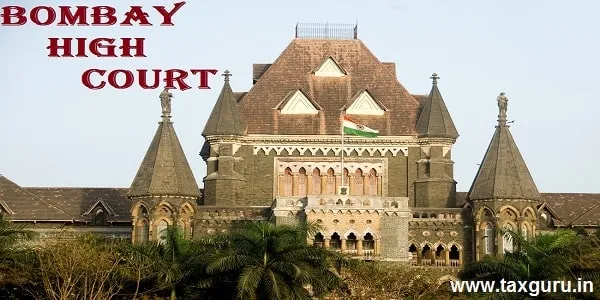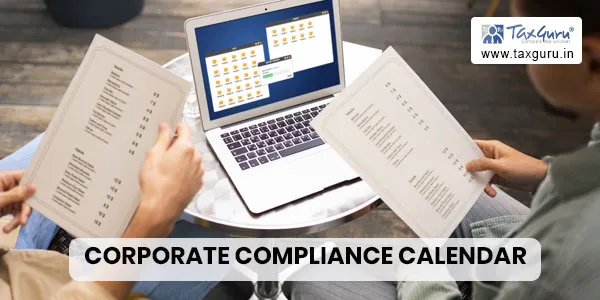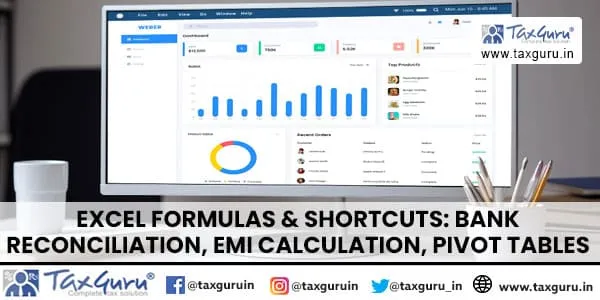Mayuri Daga, ACA, CS, B.com
 Schedule II of the Companies Act 2013, replaced Schedule XIV of the Companies act 1956 provisions governing the charge of Depreciation. The Companies Act 2013 requires companies to charge Depreciation as per Schedule II which provides useful lives to compute depreciation.
Schedule II of the Companies Act 2013, replaced Schedule XIV of the Companies act 1956 provisions governing the charge of Depreciation. The Companies Act 2013 requires companies to charge Depreciation as per Schedule II which provides useful lives to compute depreciation.
PART A OF SCHEDULE II OF THE COMPANIES ACT defines
“Depreciation” is the systematic allocation of the depreciable amount over its useful life.
“Depreciable amount” of an asset is the cost of an asset less its residual value, which shall not be more than 5% of cost of asset.
“Useful life” is the period over which an asset is expected to be available for use by an entity or the number of production or similar units expected to be obtained from the asset by the entity.
“The useful life of an asset shall not ordinarily different from the useful life specified in Part C of Schedule II and the residual value of an asset shall not be more than five per cent of the original cost of the asset:
Provided that where a company adopts a useful life different from what is specified in Part C or uses a residual value different from the limit specified above, the financial statements shall disclose such difference and provide justification in this behalf duly supported by technical advice.”
TRANSITIONAL PROVISION UNDER SCHEDULE II
From the date Schedule II comes into effect ie 1st April 2014, the carrying amount of the asset as on that date
a) Shall be depreciated over the remaining useful life of the asset.
b) After retaining the residual value, may be recognised in the opening balance of retained earnings or may be charged off to Profit and Loss account where the remaining useful life of an asset is nil.
Hence the company will have to reassess the useful life of its existing fixed assets in accordance with Schedule II.
Consider useful life an asset say General Furniture and Fixture has been reduced from 15 years to 10 years. On the date of applicability of Schedule II
- The Furniture is 8 years old- remaining WDV of the furniture shall be depreciated over the remaining life of 2 years.
- The Furniture is already 12 years old and there is no remaining life as per Schedule II, then the remaining WDV of the furniture is charged to the retained earnings of the company or charged the same to the profit or loss account.
CHARGING DEPRECIATION
If the company uses SLM for charging depreciation, the asset will be depreciated equally over the new remaining useful life of the asset determined as per Schedule II. However, if a company uses WDV method of depreciation, it will need to calculate a new rate for depreciation to depreciate the asset over their remaining useful life which is reproduced below-
Rate of Depreciation as per WDV method
R= {1 – (s/c)^1/n } x 100
Where R = Rate of Depreciation (in %)
n = Remaining useful life of the asset (in years)
s = Scrap value at the end of useful life of the asset
c= Cost of the asset/Written down value of the asset
Rate of Depreciation as per SLM method
Depreciation amount = Cost of asset-Residual value/remaining life in years
Rate of Depreciation = Depreciation/carrying amount*100
ASSESSMENT OF USEFUL LIFE AND RESIDUAL VALUE
The useful life of an asset shall not ordinarily different from the useful life specified in Part C of Schedule II and the residual value of an asset shall not be more than five per cent of the original cost of the asset
Provided that where a company adopts a useful life different from what is specified in Part C or uses a residual value different from the limit specified above, the financial statements shall disclose such difference and provide justification in this behalf duly supported by technical advice.”
ACCOUNTING STANDARD 6 AND SCHEDULE II
Accounting Standard 6 states that depreciation rates prescribed under the statute are minimum, if management’s estimate of the useful life of an asset is shorter than that envisaged under the statute, depreciation is computed by applying the higher rate. The requirements of the Schedule II and AS 6 is explained with simple examples:
- The management has estimated the useful life of an asset to be 10 years. The life envisaged under the Schedule II is 12 years. In this case, AS 6 requires the company to depreciate the asset using 10 year life only. In addition, Schedule II requires disclosure of justification for using the lower life. The company cannot use 12 year life for depreciation.
- The management has estimated the useful life of an asset to be 12 years. The life envisaged under the Schedule II is 10 years. In this case, the company has an option to depreciate the asset using either 10 year life prescribed in the Schedule II or the estimated useful life, i.e., 12 years. If the company depreciates the asset over the 12 years, it needs to disclose justification for using the higher life. The company should apply the option selected consistently.
Similar position will apply for the residual value.
COMPONENT ACCOUNTING
As per note 4 Schedule II to the Companies Act, 2013 -“Useful life specified in Part C of the Schedule is for whole of the asset. However cost of a part of the asset is significant to total cost of the asset and useful life of that part is different from the useful life of the remaining asset, useful life and depreciation of that significant part shall be determined separately.”
The company must split the fixed asset into various identifiable parts to the extent possible. The identified parts should be grouped together if they have the same or similar useful life for the purpose of separate depreciation. Insignificant parts may be combined together in the remainder of the asset or with the principal asset.
DOUBLE/TRIPLE SHIFT WORKING
Under Schedule II to the Companies Act 2013, no separate rates/ lives are prescribed for extra shift working. Rather, it states that for the period of time, an asset is used in double shift depreciation will increase by 50% and by 100% in case of triple shift working.
Transition from Schedule XIV to Schedule II raises an issue how should a company determine the remaining useful life of an asset which has been used on double/ triple shift basis in the past.. Consider that a company has purchased one plant and machinery three years prior to the commencement of the 2013 Act. Under Schedule II, its life is 15 years. For all three years, the company used the asset on a triple shift basis. The challenge is on transition to Schedule II, what should be the remaining useful life of the asset?
Schedule II has significant inbuilt flexibility to use higher/ lower useful life than the prescribed life if such life can be justified. Consequently, various views are possible for determining remaining useful life on transition from Schedule XIV to Schedule II if an asset has been used on double/ triple shift basis in past years. For example, in the case of plant above, one view is that the asset has remaining Schedule II life of 12 years, i.e., 15 years – 3 years. The second view is that remaining Schedule II life of the plant is 9 years i.e., 15 years –6 years (considering the plant was used on a triple shift basis on all days in the previous three years). The third view is that remaining Schedule II life of the plant is 6 years, i.e., 15 years – 9 years (considering the plant was used on a triple shift basis on all days in previous three years and each shift is considered to depreciate the asset equally).
INTANGIBLE ASSETS
No life prescribed for intangible assets. Notified accounting standard to govern the same except in case of intangible assets (Toll Roads) created under ‘Build, Operate and Transfer’, ‘Build, Own, Operate and Transfer’ or any other form of public private partnership route in case of road projects. Amortisation in such cases may be done as follows:-
Amortisation Amount:- Actual Revenue from Intangible Assets/Projected Revenue*Cost of Intangible Assets
Amortisation Rate- Amortisation Amount/Cost of Intangible Asset*100
Example:-
Cost of creation of Intangible Assets : ` 500/- Crores
Total period of Agreement : 20 Years
Time used for creation of Intangible Assets : 2 Years
Intangible Assets to be amortised in : 18 Years
Assuming that the Total Revenue to be generated out of intangible assets over the period would be Rs.600 crores and revenue generated for the first year is Rs.50 crores.
Based on this the charge for first year would be Rs. 4.16 Crore (approximately) (i.e. Rs. 5/Rs. 600 x Rs. 500 Crores) which would be charged to profit and loss and 0.83% (i.e. Rs. 4.16 Crore/ Rs 500 Crore x 100) is the amortisation rate for the first year.
Depreciation on assets costing less than Rs.5000/- shall be at the rate of 100%. However, where aggregate actual cost of individual items of plant and machinery costing Rs.5000/- or less constitutes more than 10% of the total actual cost of Plant and machinery, rates as specified in Schedule II shall be applicable.
Transition to Schedule II of the 2013 Act provides fair presentation and working of depreciation depicting true financial position through its statement of profit and loss and the balance sheet. The subject of depreciation has always been a matter of crucial importance for the purpose of true and fair determination of the operating results of an entity.





















Should the useful life be reduced to half in case the asset is being used for the entire useful life in case of WDV method of depreciation. If not how do we calculate the depreciation.
Dear Ms.Mayuri,
Correct me if I am wrong. If asset does not have any life as on 1/4/2014 but the carrying value si > than residual value of 5%, then the difference only has to be w/o to reatined earning and the residual value of 5% will still be carried forward.
C.A M.S.Kumar
Since Schedule II says, residual value should not be more than 5% of original cost of asset.
Can we take a lower residual value, say 5% of carrying amount of the asset stood as on 01.04.2014.
Secondly, if useful life of an asset as on 01.04.2014 is not available, in this case what would be the solution?
please suggest
Thanks & Regards
Dear Mayuri,
Can you please provide us the link or any source, where you found that Carrying Value of an assets can be charged to Profit & Loss A/c also if the life of assets is nil on 01.04.2014?
As i know, Note 7 (b) of Part C of Schedule II of C.A, 2013 provides:-
(b) After retaining the residual value,carrying amount of an assets shall be recognised in the opening balance of retained earnings where the remaining useful life of an asset is nil.
Please correct me if i am wrong. Thanks
Dear Anmol Gupta
Note 7 (b) of Part C of Schedule II of Co.s Act 2013 provides where useful life an asset is nil, remaining WDV would be charged to retained earning or P&L.
Dear Shreyans Jain
This is gist of Guidance note published by ICAI.
Is this a draft from ICAI Depriciation Manual.
Hi Mayuri,
Can you tell me where in Schedule II of the companies act 2013 it is written that carrying amount may be charged to Profit & Loss Account where life of an asset is NIL.
Dear Mr. Chandan C,
In case where the WDV of asset as per new Companies Act is greater than WDV of old Companies Act, need to adjust the difference with the accumulated profit.
Mr. Ashok Rathi
The concept of asset less than Rs. 5000 is not given in Sch II of CA 2013 but same is given in ICAI guidance note.
What do we do in case the WDV of asset as per new Companies Act is greater than WDV of old Companies Act? Say the Building value is 480000 under new act but the value is 520000 as new provisions then can we write back the value of asset.
The concept of asset less than Rs. 5000 is not given in Sch II of CA 2013. Then on what basis the para is appearing for the same.
Hi
Can you provide the computation for 9 years considered for triple shift working for asset.
Dear Mayuri,
Iam working in Chennai. I have a doubt. Kindly clarify if possible.
Can a private company give loan to another private company or to a public company or to the subsidiary of the private company.
iam not able to understand Sec 185 clearly.